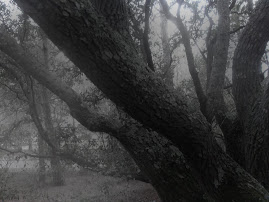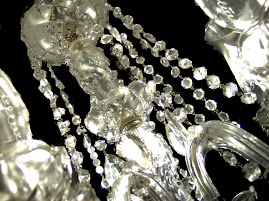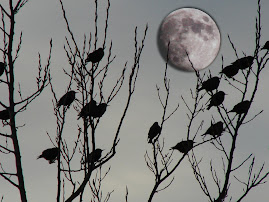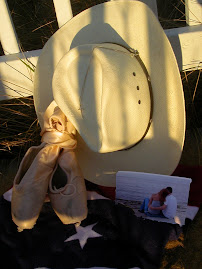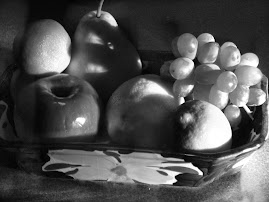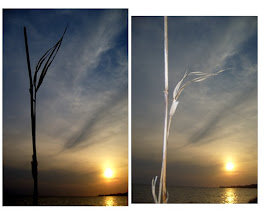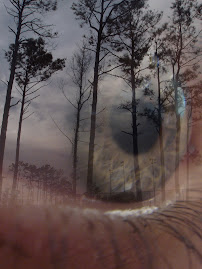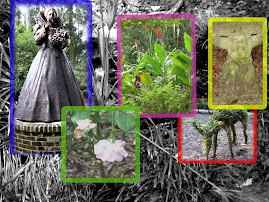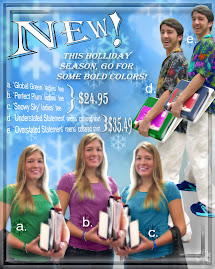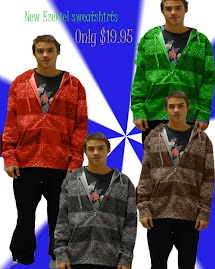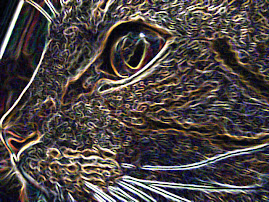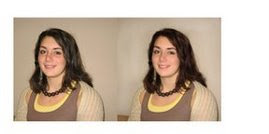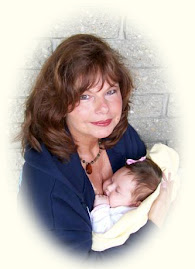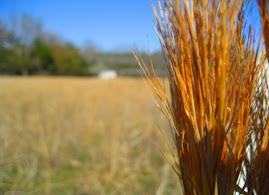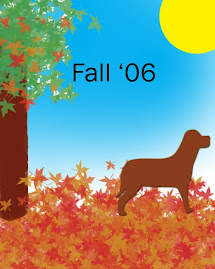Thursday, December 20, 2007
Happy Holidays!!!
Hope you all have a WICKED SWEET Christmas and a SICK New Year!!! And don't forget to take those Hockney pictures! Ms. Finch
Wednesday, December 19, 2007
ART SHOW!
We have the annual Dare County Schools Art Show at Glen Eure's Gallery coming up mid-January. I would like EVERY student to submit one piece of photography for consideration for the show. Out of my approximate 60 students, we will only be able to enter a handful. I will allow you to vote on which ones get printed, matted, and entered for exhibition. I have placed a folder on the 'N' drive (shared area) for each student to leave the ONE 5x7 - 8x10 JPEG they want considered. You will receive a 100 or zero grade for participation in this. Deadline to drop your photos in the folder is December 21st.
Tuesday, December 18, 2007
The Photocollage
Background information and project details:
http://www.waunakee.k12.wi.us/TeachWeb/wagners/PhotoCollagehandout.doc
View some of David Hockney’s photocollages:
http://www.artchive.com/artchive/H/hockney/furstnbg.jpg.html
http://www.getty.edu/art/gettyguide/artObjectDetails?artobj=112574
http://www.artchive.com/artchive/H/hockney/hockney_mother.jpg.html
http://www.getty.edu/bookstore/titles/posthockney.html
Read about collages, and see some of Hockney’s work:
http://facweb.cs.depaul.edu/sgrais/collage.htm
More on David Hockney:
http://www.artchive.com/artchive/H/hockney.html
http://www.pbs.org/wnet/americanmasters/database/hockney_d.html
Experiment using your own photographs with the “Hockneyizer”:
http://bighugelabs.com/flickr/hockney.php
Another artist’s interpretation:
http://very.com/about.htm
Our holiday picture-taking assignment is going to be based on the work of artist, David Hockney. When we come back to class in January, you’ll put together a collage from the photos you take. You will need at least 50-100 pictures. Think seriously about your subject matter! You will need to take photos from every conceivable angle and distance. You will print it up, design the collage, and paste it together when we return to school!
Additional interesting reading:
http://www.austinkleon.com/?p=936http://www.koopfilms.com/hockney/articles.html
http://www.waunakee.k12.wi.us/TeachWeb/wagners/PhotoCollagehandout.doc
View some of David Hockney’s photocollages:
http://www.artchive.com/artchive/H/hockney/furstnbg.jpg.html
http://www.getty.edu/art/gettyguide/artObjectDetails?artobj=112574
http://www.artchive.com/artchive/H/hockney/hockney_mother.jpg.html
http://www.getty.edu/bookstore/titles/posthockney.html
Read about collages, and see some of Hockney’s work:
http://facweb.cs.depaul.edu/sgrais/collage.htm
More on David Hockney:
http://www.artchive.com/artchive/H/hockney.html
http://www.pbs.org/wnet/americanmasters/database/hockney_d.html
Experiment using your own photographs with the “Hockneyizer”:
http://bighugelabs.com/flickr/hockney.php
Another artist’s interpretation:
http://very.com/about.htm
Our holiday picture-taking assignment is going to be based on the work of artist, David Hockney. When we come back to class in January, you’ll put together a collage from the photos you take. You will need at least 50-100 pictures. Think seriously about your subject matter! You will need to take photos from every conceivable angle and distance. You will print it up, design the collage, and paste it together when we return to school!
Additional interesting reading:
http://www.austinkleon.com/?p=936http://www.koopfilms.com/hockney/articles.html
Catalog Page
We will be putting together a catalog page this week using photos you have taken in the past. You will be experimenting with the color replacement tool in PhotoShop to show an article of clothing in several different colors. You may even want to design a pattern to use! Your "advertisement" must include text. Think about your font and size of type, as well as your background choice. You want your catalog page to really grab the attention of your "buyer". This will be due on Thursday by the end of class.
Wednesday, December 12, 2007
next project...
Metaphor Self-Portrait
Metaphor--
1) A figure of speech in which a word or phrase that ordinarily designates one thing is used to designate another, thus making an implicit comparison, as in “a sea of troubles” or “All the world’s a stage” (Shakespeare). 2) One thing conceived as representing another; a symbol: “Hollywood has always been an irresistible, prefabricated metaphor for the crass, the materialistic, the shallow, and the craven” (Neal Gabler).
Still Life--Still life is the photography of small groups of objects, either found or put together for the purpose. It may simply be concerned with formal qualities (tones, textures, colours, shapes, form etc) or have a more metaphorical intent.
Check out these sites:
http://www.shutterpoint.com/Photos-BrowseCat.cfm?cat_id=7
http://www.shutterbug.net/refreshercourse/lens_tips/1205back/
http://www.betterphoto.com/gallery/dynoGall2.asp?catID=17
Most of what you see here is considered ‘Still Life’ photography.
Read these instructions carefully. This photograph is about you. It is a portrait of you. The only thing different is that you are not in it. This picture is a still life, a metaphor that contains at least three things that represent who you are. Your friends should be able to look at it and recognize you in the picture. This picture should not contain any living things, only still objects. It should represent things you are passionate about.
Pay special attention to lighting and arrangement of the items. Change them up and see what works best. You will make a contact sheet with 12 DIFFERENT photos that represent YOU. You
Contact Sheet is due December 17th. Final is due December 19th at the end of class.
Metaphor--
1) A figure of speech in which a word or phrase that ordinarily designates one thing is used to designate another, thus making an implicit comparison, as in “a sea of troubles” or “All the world’s a stage” (Shakespeare). 2) One thing conceived as representing another; a symbol: “Hollywood has always been an irresistible, prefabricated metaphor for the crass, the materialistic, the shallow, and the craven” (Neal Gabler).
Still Life--Still life is the photography of small groups of objects, either found or put together for the purpose. It may simply be concerned with formal qualities (tones, textures, colours, shapes, form etc) or have a more metaphorical intent.
Check out these sites:
http://www.shutterpoint.com/Photos-BrowseCat.cfm?cat_id=7
http://www.shutterbug.net/refreshercourse/lens_tips/1205back/
http://www.betterphoto.com/gallery/dynoGall2.asp?catID=17
Most of what you see here is considered ‘Still Life’ photography.
Read these instructions carefully. This photograph is about you. It is a portrait of you. The only thing different is that you are not in it. This picture is a still life, a metaphor that contains at least three things that represent who you are. Your friends should be able to look at it and recognize you in the picture. This picture should not contain any living things, only still objects. It should represent things you are passionate about.
Pay special attention to lighting and arrangement of the items. Change them up and see what works best. You will make a contact sheet with 12 DIFFERENT photos that represent YOU. You
Contact Sheet is due December 17th. Final is due December 19th at the end of class.
Wednesday, December 5, 2007
Still Life Photography
Check out the following sites:
http://webhome.idirect.com/~dpl/gallery1.html
http://www.betterphoto.com/gallery/dynoGall2.asp?cat=17
http://www.usefilm.com/photo_category/16/Pictures_of_Still_Life.html
http://www.apogeephoto.com/mag2-6/mag2-7winners.shtml
http://www.stilllifewith.com/2006/07/14/photo-contest-from-food-wine-magazine/
http://stilllifewith.com/2006/12/01/stw-challenge-for-december-tradition/
http://digitalmedia.oreilly.com/2004/09/15/food_photos.html
http://www.markhemmings.com/MarkWebsite/food_photography/index.htm
http://dessertfirst.typepad.com/dessert_first/2006/05/food_photograph.html
Basic Principles of Still Life Photography:
Throughout the decades, artists have depicted still life scenes—arrangements of inanimate objects—in paintings and photography. Shooting still life subjects is one of the best ways to sharpen your photographic skills. You can take your time, and your subject remains stationary.
Good composition, framing and lighting are all very important to translate your still life into a great photo. Every day we are bombarded with still life images of appetizing foods, shiny housewares and other appealing products in magazine ads, brochures and catalogs. Professionals spend a great deal of time setting up these shots and you can learn a lot just by studying the photos you find most appealing and unique.
Notice how photographers use repeating shapes and lines to create patterns and use complimentary colors. Study the lighting that they use. Simplicity is very important when composing still lifes. You don’t need to collect a wide range of complicated objects to create an interesting picture. Instead, choose a few objects with a common thread.
The arrangement of a still life should begin with the positioning of a single dominant subject. Then add other objects one at a time, and examine the arrangement through your camera’s viewfinder. Experiment with your camera angle until the scene shows the elements in the most pleasing balance. Photograph the original grouping, and then rearrange or remove objects to see if it improves the composition.
Your next project will involve setting up a still life of specific objects and photographing it. To help prepare you, read the previously mentioned articles and find 6 still life photographs from the Internet that you particularly like. These photos should include only inanimate objects. Paste the 6 photos to a one-page word document (two columns) and write a short paragraph about each. Tell what techniques the photographer used that appeal to you. This will be due at the end of class Friday, December 7th. Turn in a hard copy, and leave a copy in your "1AAA Completed Assignments" folder.
Over the weekend, take still life photographs of FOOD AND/OR BEVERAGES. Experiment with the arrangement and lighting. Take some photos with flash and some without. Be creative! Think about the elements of composition we have just studied. Be prepared to work with your food photos Monday, December 10th. A contact sheet of 12 will be due at this time. If you do not have your photos Monday, you will be writing a paper on still life photography while the rest of us work in PhotoShop. The 6 edited and best 5x7 are due at the end of class. The alternative assignment, a 3-page paper on Photographic Still Life, is due then as well. We will move on to the next topic Tuesday. Unless you are absent Monday, you are expected to have this project completed that day.
http://webhome.idirect.com/~dpl/gallery1.html
http://www.betterphoto.com/gallery/dynoGall2.asp?cat=17
http://www.usefilm.com/photo_category/16/Pictures_of_Still_Life.html
http://www.apogeephoto.com/mag2-6/mag2-7winners.shtml
http://www.stilllifewith.com/2006/07/14/photo-contest-from-food-wine-magazine/
http://stilllifewith.com/2006/12/01/stw-challenge-for-december-tradition/
http://digitalmedia.oreilly.com/2004/09/15/food_photos.html
http://www.markhemmings.com/MarkWebsite/food_photography/index.htm
http://dessertfirst.typepad.com/dessert_first/2006/05/food_photograph.html
Basic Principles of Still Life Photography:
Throughout the decades, artists have depicted still life scenes—arrangements of inanimate objects—in paintings and photography. Shooting still life subjects is one of the best ways to sharpen your photographic skills. You can take your time, and your subject remains stationary.
Good composition, framing and lighting are all very important to translate your still life into a great photo. Every day we are bombarded with still life images of appetizing foods, shiny housewares and other appealing products in magazine ads, brochures and catalogs. Professionals spend a great deal of time setting up these shots and you can learn a lot just by studying the photos you find most appealing and unique.
Notice how photographers use repeating shapes and lines to create patterns and use complimentary colors. Study the lighting that they use. Simplicity is very important when composing still lifes. You don’t need to collect a wide range of complicated objects to create an interesting picture. Instead, choose a few objects with a common thread.
The arrangement of a still life should begin with the positioning of a single dominant subject. Then add other objects one at a time, and examine the arrangement through your camera’s viewfinder. Experiment with your camera angle until the scene shows the elements in the most pleasing balance. Photograph the original grouping, and then rearrange or remove objects to see if it improves the composition.
Your next project will involve setting up a still life of specific objects and photographing it. To help prepare you, read the previously mentioned articles and find 6 still life photographs from the Internet that you particularly like. These photos should include only inanimate objects. Paste the 6 photos to a one-page word document (two columns) and write a short paragraph about each. Tell what techniques the photographer used that appeal to you. This will be due at the end of class Friday, December 7th. Turn in a hard copy, and leave a copy in your "1AAA Completed Assignments" folder.
Over the weekend, take still life photographs of FOOD AND/OR BEVERAGES. Experiment with the arrangement and lighting. Take some photos with flash and some without. Be creative! Think about the elements of composition we have just studied. Be prepared to work with your food photos Monday, December 10th. A contact sheet of 12 will be due at this time. If you do not have your photos Monday, you will be writing a paper on still life photography while the rest of us work in PhotoShop. The 6 edited and best 5x7 are due at the end of class. The alternative assignment, a 3-page paper on Photographic Still Life, is due then as well. We will move on to the next topic Tuesday. Unless you are absent Monday, you are expected to have this project completed that day.
Subscribe to:
Posts (Atom)
